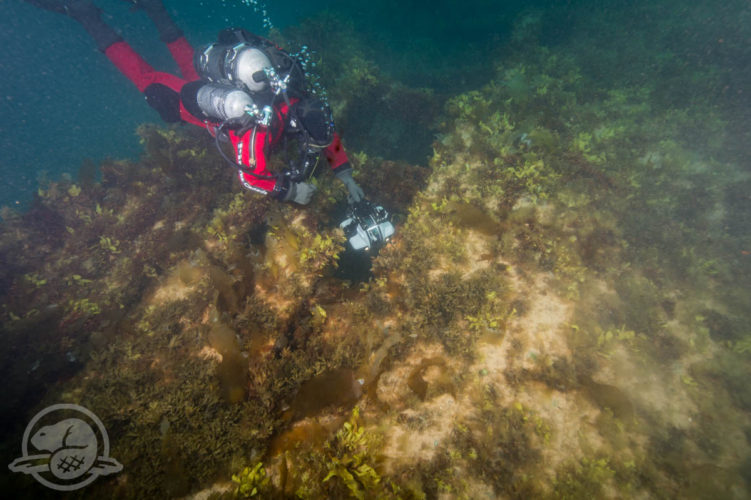Configure Now
Items in Your Cart0
0Items in Your Cart
Start building your packageShop Now
For the first time since it was lost, HMS Erebus has been examined inside and out to lend clues into Franklin’s tragic expedition.
This August, Parks Canada while equipped with a Deep Trekker DTG2 ROV, traveled north to uncover the mysteries surrounding the HMS Erebus and the rest of the lost Franklin expedition. The Deep Trekker underwater drone was used to provide live HD footage and images to the team at the surface while it dove into the icy waters to investigate the confined lower levels of the sunken ship. During their investigation, the research team was able to access the lower hold to acquired imagery of features never seen before.
Along with the robust design and internal batteries that made Deep Trekker the best tool to easily explore in the Northern Passage, the underwater drone was customized specifically for the project to include an inertial measurement unit (IMU) and a full HD camera.
The initial images of the Deep Trekker penetrating the ship have recently been released. We will continue to share more as is available.

(Photo: Thierry Boyer, Parks Canada)

(Photo: Thierry Boyer, Parks Canada)

(Photo: Thierry Boyer, Parks Canada)

(Photo: Thierry Boyer, Parks Canada)
The discovery of the HMS Erebus in 2014 has been a major milestone in the search for what took place those solemn years. The exploration of the HMS Erebus with the Deep Trekker ROV systems has been the next piece of the puzzle that will provide insight as to how events unfolded during the expedition, insight into naval architecture in the 1840s, and hopefully locate some missing clues that will continue to expand the story of the Franklin expedition.
Want to know how ROVs can assist in your next underwater search?
 In the spring of 1845, the HMS Erebus and HMS Terror set sail from England with its crew of 134 under the command of Rear Admiral Sir John Franklin. The crew’s mission was to discover a crossing to Asia across the top of Canada’s elusive Arctic known as the Northwest Passage.
In the spring of 1845, the HMS Erebus and HMS Terror set sail from England with its crew of 134 under the command of Rear Admiral Sir John Franklin. The crew’s mission was to discover a crossing to Asia across the top of Canada’s elusive Arctic known as the Northwest Passage.
Aside from casual meetings with the Inuit, Sir John Franklin and his crew would never be seen alive again.
The disappearance of the vessels sparked a massive search effort in the Arctic. Hudson's Bay Company doctor, John Rae, collected artifacts and testimony from local Inuit which would later reveal the dramatic circumstances of the expedition’s fate.
The message revealed that in late 1846, the HMS Erebus and HMS Terror had become imprisoned in ice and remained there for approximately one and a half years. It also indicated the passing of Sir John Franklin on June 11th, 1847.
After being trapped for so long and with the loss of their commanding officer, the remaining crew members abandoned the ships and set off on foot in search of safety; tragically none would survive. The entire crew of both the HMS Erebus and HMS Terror were lost in the Northwest Passage of the Canadian Arctic - succumbing to hypothermia, scurvy, and starvation.
In partnership with the local communities, Parks Canada and the rest of the underwater archaeology team will continue their investigations with help from Deep Trekker ROVs to access confined areas and internal holds of the ship. Not only to ensure the preservation of both sites but to uncover more knowledge and insight to the final days of the tragic Franklin expedition.
Source: Parks Canada
Related Story:
October 21st, 2024
Deep Trekker announces the appointment of José Albornoz Farias as the...
October 23rd, 2024
Deep Trekker & UCO announce a partnership to improve aquaculture operations...
October 10th, 2024
Discover Deep Trekker’s ROV GPS, offering precise surface tracking, real-time recalibration,...